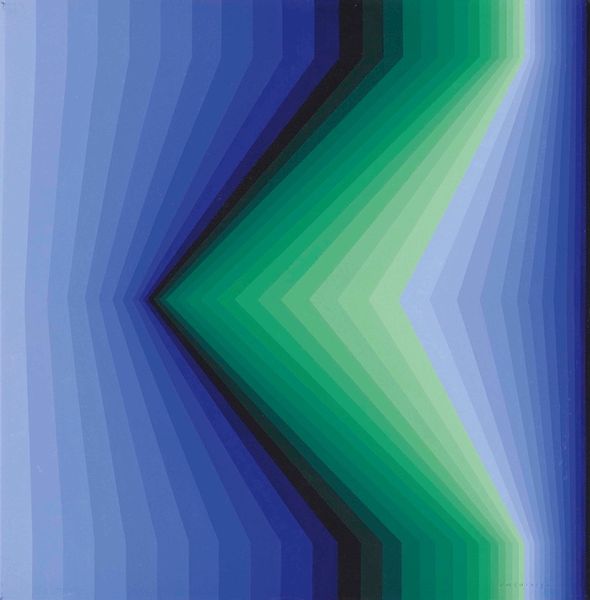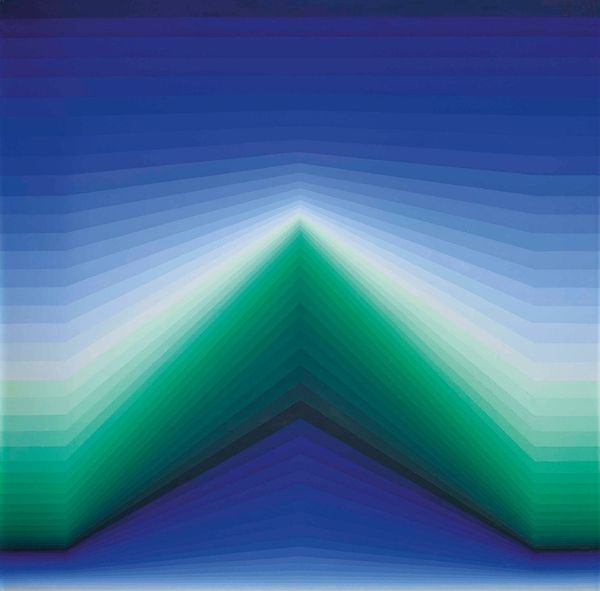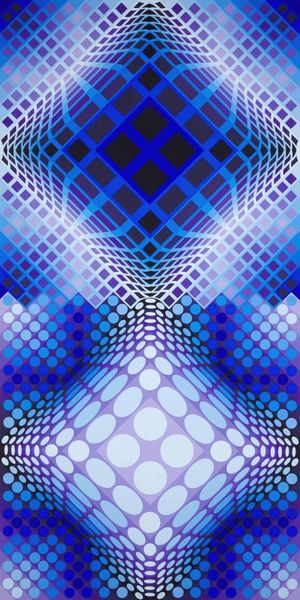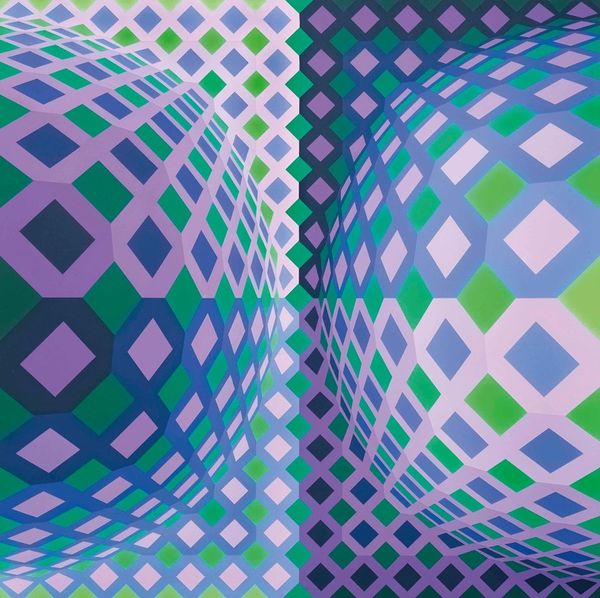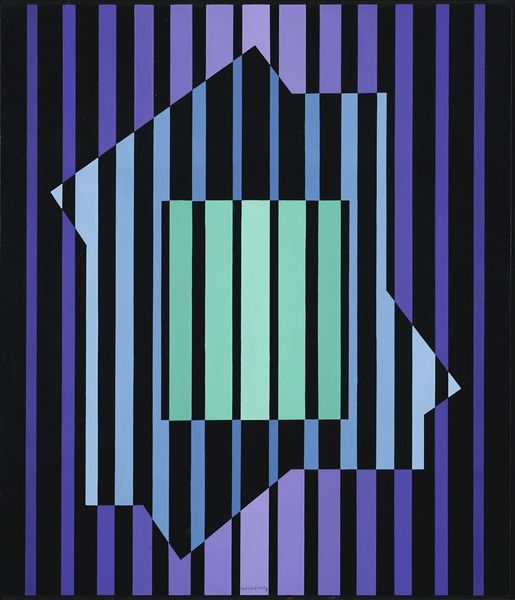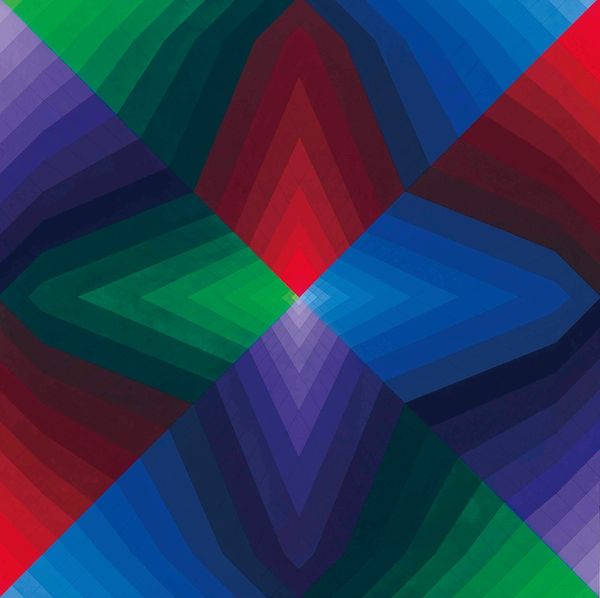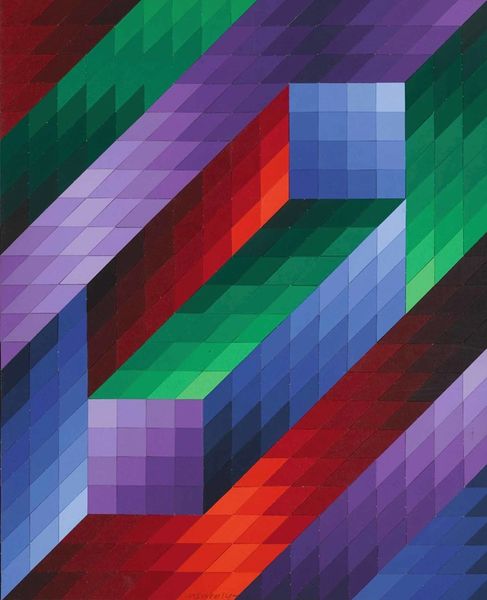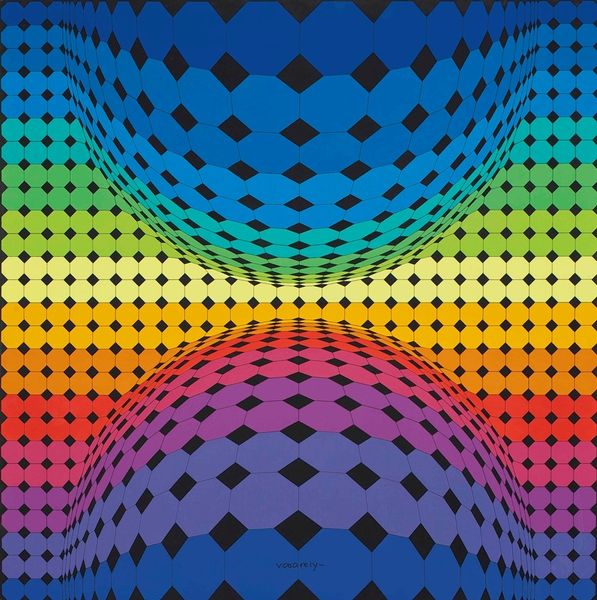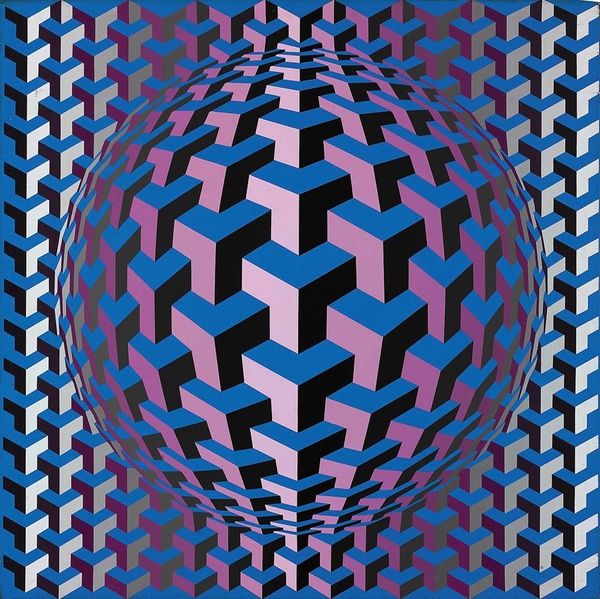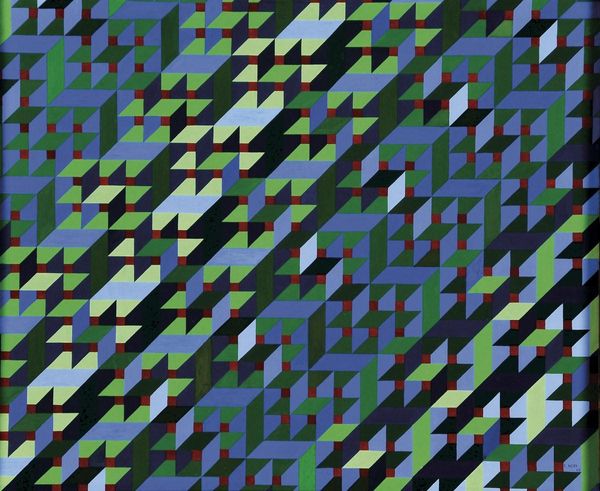
painting, acrylic-paint
#
op-art
#
painting
#
acrylic-paint
#
abstract
#
geometric pattern
#
abstract pattern
#
abstract form
#
minimal pattern
#
geometric
#
geometric-abstraction
#
line
#
abstract art
#
geometric form
#
modernism
Copyright: Modern Artists: Artvee
Editor: We’re looking at “Ilile III” by Victor Vasarely, created in 1968 using acrylic paint. The way these vertical lines shift and the colors blend create this disorienting optical effect, almost like the canvas is breathing. What were the major influences at play here? Curator: Well, think about 1968. This was a period deeply marked by societal upheaval, technological advancements, and a questioning of established norms. Op Art like this offered a seemingly objective, almost scientific, art experience, moving away from subjective expressionism. But how might such abstraction connect, or disconnect, from those political realities? Editor: I guess it's about the viewer's perception, more than some inherent meaning in the work itself? Curator: Precisely. Vasarely aimed to democratize art. Geometric abstraction, especially through techniques producing multiple, accessible editions, becomes an art for the masses. The lack of obvious subject matter could also be seen as a rejection of traditional, hierarchical artistic values, allowing wider audiences to form their own interpretations. Does this piece challenge any pre-conceived notions about "high art"? Editor: Definitely! It’s reproducible, not reliant on virtuoso skill, and creates an experience through pure opticality. It reflects a shift towards art as an experience. Curator: Indeed, the experience of engaging the audience to create dialogue was the prime driver. Reflecting on the societal trends, what is the most relevant point that this artwork highlights? Editor: How art was breaking away from just being an object for the elite. Curator: Precisely, moving art out of rarified spaces and into everyday life, reflecting the era’s emphasis on democratization and access.
Comments
No comments
Be the first to comment and join the conversation on the ultimate creative platform.
